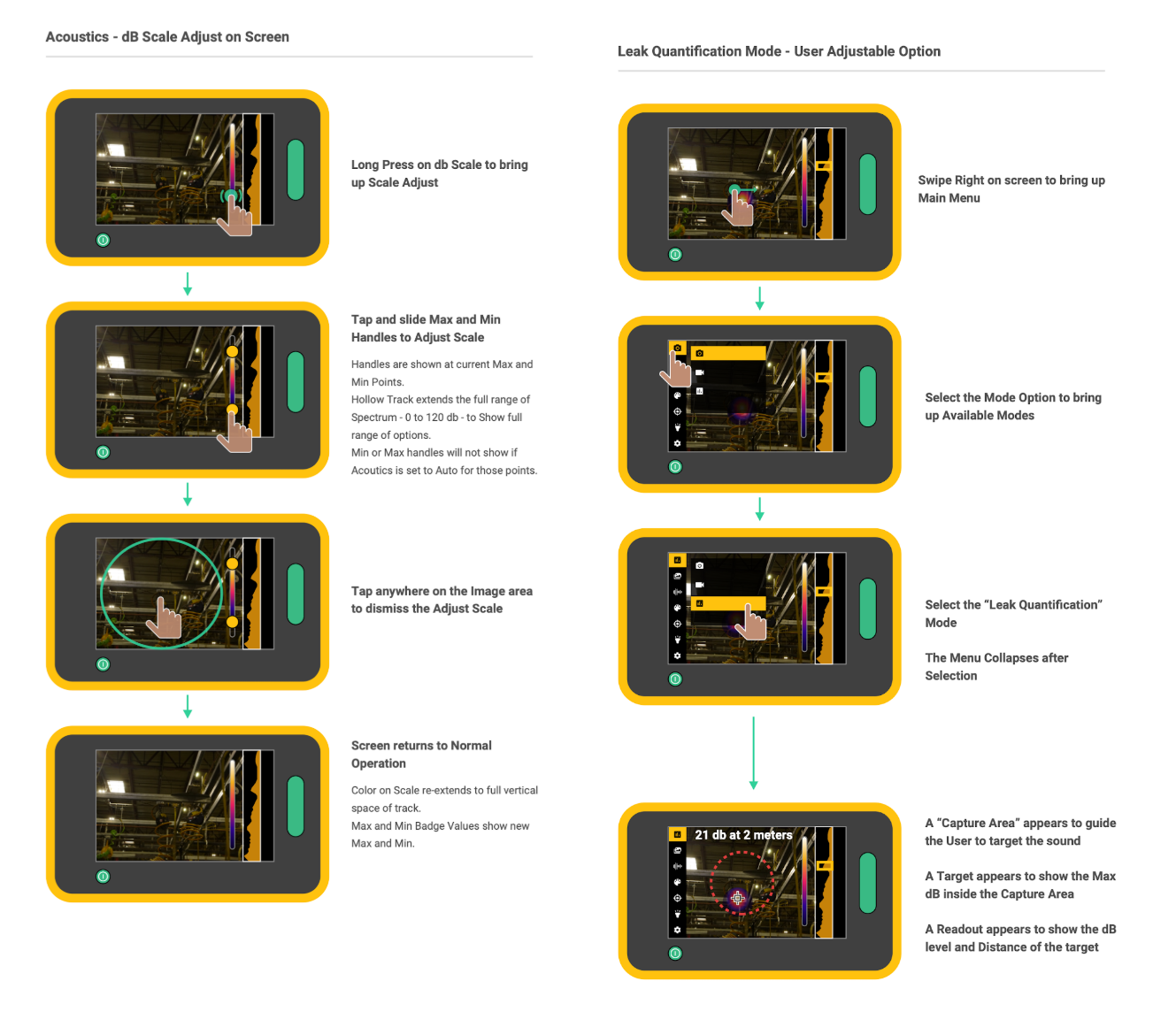Designing for Emerging Technologies


The product design team partnered with Acoustic Imaging and AI SMEs from the Netherlands and Preventive Maintenance SMEs at Fluke to understand where and how acoustic data could be used in industrial settings.
These explorations included a series of workshops to further learn new discoveries as data techniques improved, as well as coaching and understanding the limits of the technology from SMEs so that the Design team could identify potential user research opportunities.

After initial onboarding and understanding of how to use the Proof of Concept device, the Product Design team visited 9 Industrial Facilities in the U.S. and 6 Industrial Facilities in Europe to test data collection in the real world.
These field research visits had the benefit of both gathering data sets for data science to experiment with and demonstrating the sensor technology in real-world environments to potential future users.
During these field visits, we observed rounds of annual inspections of pipes, pressurized hoses, and electrical equipment both with conventional methods and testing the Proof of Concept Device.
After our initial introductions, the team revisited 3 U.S. sites once a month for 6 months to understand reoccurring behaviors in Preventive Maintenance and record keeping. This longitudinal mindset allowed us to understand how a future user might want to analyze data over time and also provided the data science team with more granular sensor data for calibration.

These field visits and demonstrations highlighted key points of the experience that had learning curves.
After spending time understanding the correct ways to analyze the data compared to the interpretations being made by future users in the field, I began exploring a few key Data Visualization and User Interface elements, including:
How the Acoustic Overlay was presenting on top of a Visual Image of different categories of machinery?
How do we convey to the User the filtering nature of selecting specific Frequency Bands?
If a User is observing noise at a specific Frequency, how do we clue them in on noise at other frequencies that they might need to analyze?
This type of acoustic data is a fairly new type of data for many factory maintenance professionals, and the data science working on correlating specific frequencies to specific machinery failure events was still evolving. When considering these challenges, I wanted to understand how we make the interface of this device approachable and easy for field technicians to explore data in different combinations to arrive at their own correlations and conclusions.


After comparing this type of data to other technical domains (ex. X-Ray density, magnetic field presentations), we needed to present a few options to Potential Customers in order to understand what parts of the experience were approachable and what parts were intimidating.
I enlisted the help of a User Research Intern and guided them as they developed a research method for testing different combinations of data visualizations. We looked to see if specific treatments led to a misinterpretation of the failure event being pictured. We also added other Participatory Design exercises to the experiment to learn from the Potential Customers if other types of data (temperature, humidity, etc.) would improve their accuracy in interpreting the acoustic data.

The Data Visualization Study with both A/B testing and Participatory Design activities provided enough qualitative information to align on a direction for key moments of the Interaction Design. These moments included not only the basic camera operation, but also how to present the UI for tuning the acoustic device and what different Customer Preferences should be reflected in the device settings.
I designed the key screens, visual design specifications, UI trees for navigation, and documented the design decisions made for future devices in this product family.
Because the development team was in partnership with a company outside of Fluke, all information architecture, interaction user flows, product screen templates, and considerations with the physical interface and touchscreen interface were documented in detail. I made efforts to write a full set of documentation so that the development team could have a clear specification to develop the software and so that the technical writing team and subject matter experts could begin working on training information needed for the launch of this new type of measurement device.



The work on the Visual Design, Data Visualization and Interaction Design for manipulating acoustic data on a handled device resulted in me earing 5 patents.
The initial launch of the device led to a new family of products for the Fluke portfolio and has sparked research and design efforts to understand further specialization of this type of tool for specific industries including electrical installations and motor maintenance.

Do you have an idea? Do you work with emerging technology or want to help reach underserved populations with digital tools?
Reach out and let me know what your passion is and let's make the future happen together!